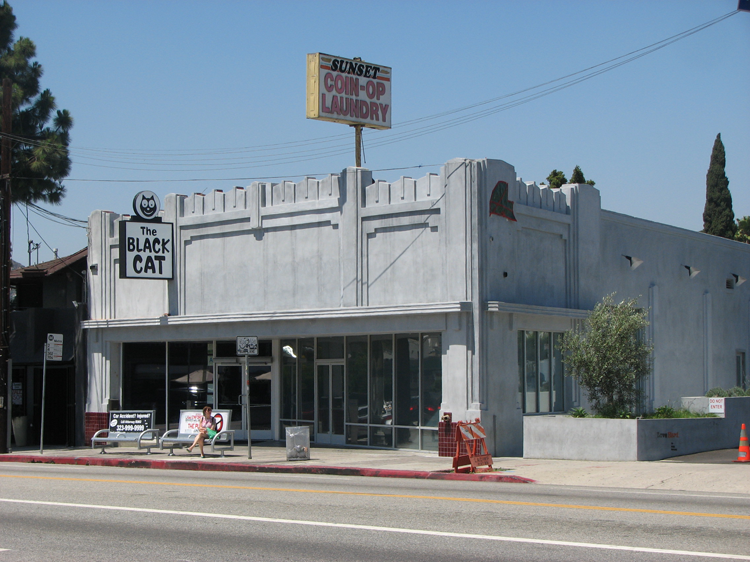
The Black Cat, Site of the Black Cat Protest, Los Angeles Historic Cultural Monument #939
Built: 1939 Declared: 11/07/2008
Based on press and newsletter accounts the protest, in response to a police raid on New Year’s morning, involved 400 – 500 persons. This was possibly the largest gay protest to be held in this country up to that point in time, and very likely the largest such protest to be held in Los Angeles to that time. It was widely noted as being precedent shattering. An analysis of gay protests in six major American cities during the mid-1960s did not uncover a larger prior action.
In 1967, gay and lesbian people lived in a state of intimidation. The six men convicted of exchanging New Year’s kisses in the Black Cat were liable under California law to register as sex offenders for the rest of their lives. Add to this the threat of violence – which had occurred between police and demonstrators during Sunset Strip protests in November and December 1966 – and which was also reported at the raid on the Black Cat. Given this, the large turnout was remarkable.
The protest marked a turning point in the local gay and lesbian movement. Earlier local organizations, though paving the way for later groups, had been secretive and/or non-political. The organizations that led the protest at the Black Cat took the civil rights movement as a model, adopting the concepts of self-empowerment and pride. They were assertive and non-elitist. The Black Cat protest was also closely tied to the counter culture movement sweeping the city at the time.
The public lewdness conviction of two men arrested in the Black Cat raid for kissing other men was appealed. In a petition seeking consideration by the U.S. Supreme Court, their attorney broke legal precedent by asserting for the first time that homosexuals are entitled to equal protection under the law.
Arguably, few had stood as the Black Cat protesters did on that February night in 1967. The unprecedented nature of their actions, their numbers, their courage and their personal pride – this created tremendous momentum. In the attached correspondence author Mark Thompson states, “This Silver Lake site is important both regionally and nationally, as it is a primary place where the modern gay civil rights movement began.” Author Lillian Faderman, in her attached letter of support, notes that the protests in front of the Black CAT were “the crucial spark that ignited a whole movement.”